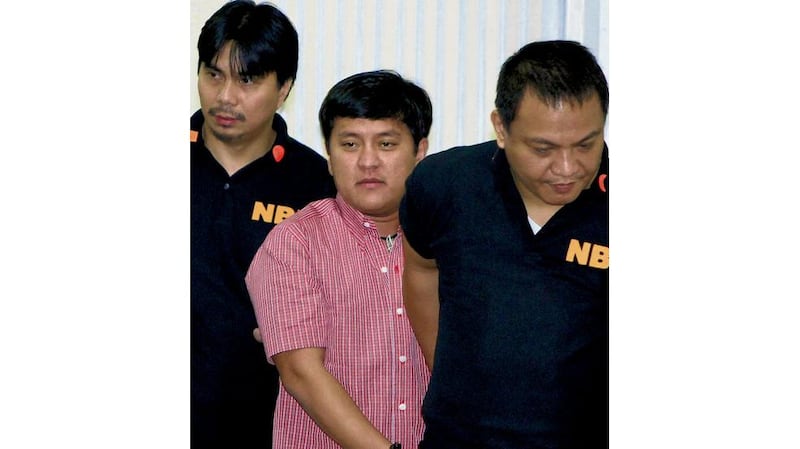Many in the media believe the problem goes all the way to President Arroyo, writes DAVID MCNEILLin Maguindanao
IT IS a chilling statistic – of the 76 journalists murdered around the world in 2009 according to press watchdog Reporters Without Borders, at least 30 were killed in a single incident.
That attack, on a group of reporters covering an election, occurred not in Iraq, Afghanistan or another flak-jacket zone but in a country considered largely peaceful and democratic: the Philippines.

Journalists say that while the scale of the November attack in Maguindanao, on the south eastern island of Mindanao, was particularly shocking since the Philippines has long been one of the five most dangerous countries on the planet for the free press.
“Reporters have been getting killed here for years,” says Ma Christina Rodriguez, a spokeswoman of the Philippine National Union of Journalists (PNUJ).
“Sometimes there isn’t even the barest investigation.”
According to the PNUJ, 134 journalists have lost their lives while working in the Philippines over the last two decades – at least 35 in the last year.
And unlike Veronica Guerin, whose 1996 assassination caused outrage in Ireland and led to important legal changes, most of the killings here cause barely a blip outside of the media.
“There have been just five convictions associated with these killings, all trigger men, no masterminds,” says Sonny Fernandez, vice-chairman of the PNUJ. “The killers are becoming more brazen.”
Philippine journalists have grown used to the grim annual roll call in their profession, and the lack of interest it elicits from the authorities. Some cite the case of Badrodin Abbas, a reporter in the Mindanao city of Cotabato, who was shot in the head last year by two assassins on a motorbike.
Abbas had been warned at least twice about his radio commentaries, which were critical of the four-decade-old government war with Muslim rebels in Mindanao. His death caused a brief flurry of interest but his killers, typically, have never been found.
Many journalists have been targeted by local strongmen who run chunks of the country like their own private fiefdoms and barely tolerate the free media.
But the PNUJ says as the scale of intimidation and killings increases, there are signs that the central state is involved too.
Those fears were strengthened last year by the discovery that the PNUJ itself was considered an “Enemy of the state” by the Philippine military, along with Carlos H Conde, freelance correspondent for the New York Times.
Both were found in a document prepared by military intelligence staff that listed them and about 100 other mainly progressive or left-wing activists for possible assassination, known in the Philippines as “Border of battle”.
“The PNUJ reiterates that we have, so far, seen no indication that the murder of journalists in this country is part of official policy,” said the union, before warning: “But we may have to reconsider our position.”
Watchdogs blame several interlinked factors for the deadly toll on Philippine journalism: a weak central government, powerful and corrupt military and political clans that fill the vacuum, police incompetence and the cheap cost of a life.
The PNUJ says young goons can be hired for as little as €20 to murder a reporter. Former army and police officers, vigilantes and private bodyguards are also on tap for a professional hit, claim observers.
But the fish appears to be rotting from the head. At best, most journalists here believe President Gloria Macapagal-Arroyo is guilty of turning a blind eye to the worst excesses of the military and local warlords she relies on to hold power. At worst she is a deadly enemy of the free press, says Rodriguez. “President Arroyo and her government have been particularly hostile to the media.”
Despite the president’s oft professed support for journalists, the PNUJ argues that she showed her true colours during the 2007 state of emergency, ostensibly called to prevent a military coup but in reality to rein in the press, believes Fernandez.
“The media was the target of the state of emergency. The military were deployed to newspapers and at least one TV network.” Fernandez says the more murders go unsolved, the more perilous life becomes for those journalists still working.
“It started to become dangerous when the first killing went unsolved. People see they can get away with it. The more this happens, the more the powers that be are emboldened.”
Traditionally, violence against reporters in the Philippines worsens as elections approach and the sharp-elbowed fight for local power begins. With a general election looming in May, journalists here are asking the rest of the world to keep a close eye on a country that so often seems to fly below the international media radar.
The NUJ in Britain and Ireland called for a day of solidarity last month for their slain Philippine colleagues. Unfortunately, it is unlikely to be the last.









